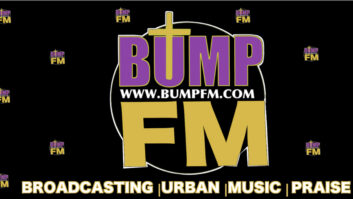
The Twin Cities recently saw the launch of a low-power FM station targeted for Somalis.
KALY(LP) is operated by the nonprofit Somali American Community and plays Somali music and Somali-language talk programming for Somalis who reside in Minnesota. Prometheus Radio Project helped to build the studio, install broadcast equipment and train volunteers on how to operate it. The station launched on Sept. 24, the Eid al-Adah holiday. It airs at 101.7 MHz. Mahamed Cali and Abdirahman Nor are shown at right.
The station was set up to help new immigrants navigate life in America by providing basic information like weather as well as conversations regarding issues of communication, how the education system works, and other intricacies of American culture, Prometheus said in an announcement.
KALY is not the only LPFM station in the Minneapolis area. Prometheus Technical Director Will Floyd spent the summer in the Twin Cities helping other stations like WEQY(LP) at 104.7 in St. Paul, now on the air, and two stations expected to launch in 2016: WFNU(LP) operated by Frogtown Neighborhood Association and Center for Hmong Arts and Talent in St. Paul, and another in Minneapolis operated by Pillsbury United Communities.
“In a media landscape dominated by national networks and clickbait headlines, low-power FM is media at its most local,” Floyd was quoted in the announcement. “Stations like KALY and WEQY return local flavor to our media and are part of a larger movement of localism and community investment.”
Prometheus was a part of the coalition that pushed Congress to pass the Local Community Radio Act of 2010, which directed the FCC to make more LPFM stations available. Bringing more LPFM signals to urban areas was a goal of that expansion. Since then, Prometheus has supported numerous groups to prepare for radio permit applications, including KALY. The number of licensed LPFM stations in the country is now 1,352, according to an FCC database.
According to engineering and other studies by Prometheus, KALY’s signal is expected to cover an area with a population of about 200,000 in Minneapolis.











